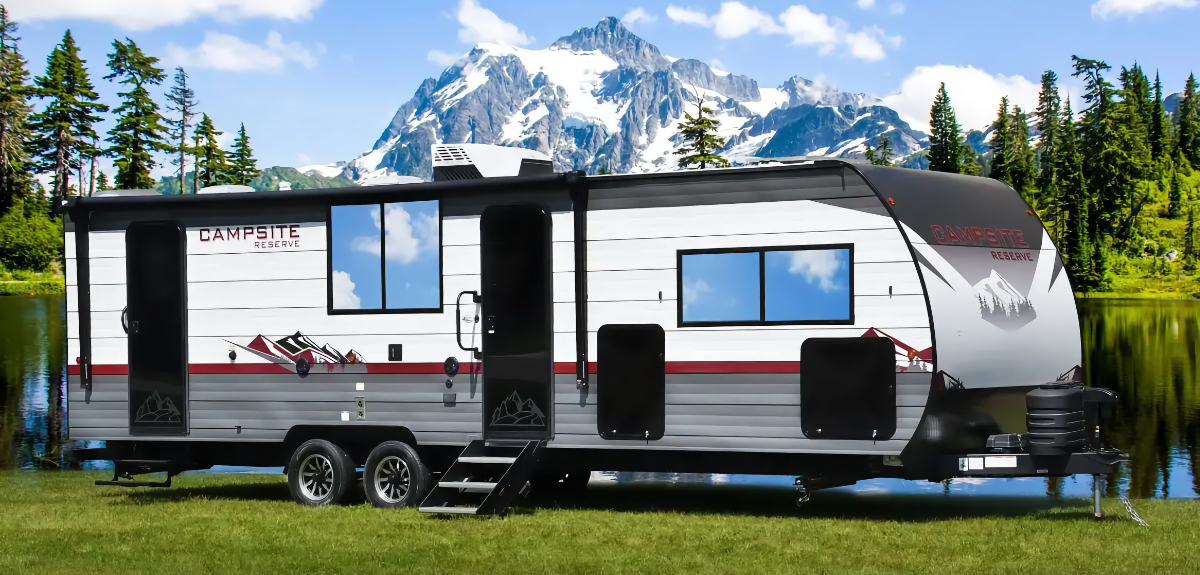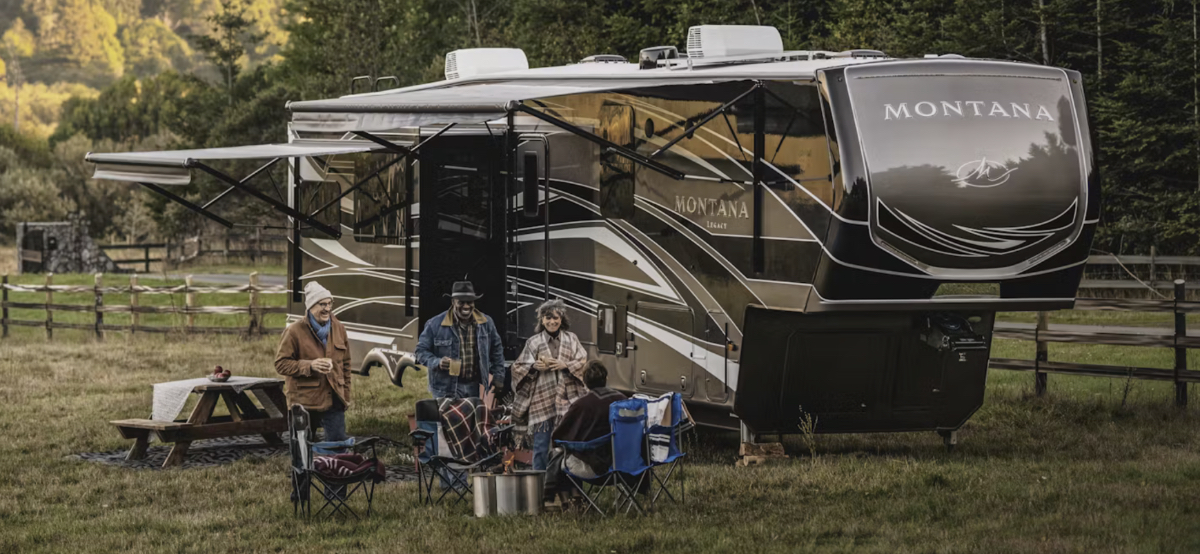Tech Q&A – September, 2022
A Faulty-Light Fix, a Foul-Smelling Black Tank, Removing Rust Stains, and Long-Distance Trailer Plug-In
Image Caption:
Overhead Lights Inoperative
Q: We recently purchased a 2012 Airstream Interstate Class B motorhome and are having a problem with the overhead lights. We have checked and changed the fuse, checked the switch and lights, and cannot find any problem. The lights are LEDs. I do not know what else to do.
—Jim Singleton, via email
A: I assume the problem you are having with them is that they don’t work at all, not intermittently, for example. LEDs usually last a long time, and it’s highly unlikely they all failed at once. Therefore, I would start with the fuse panel. You mentioned that you checked and changed “the” fuse. However, I have found that on some RVs, the fuses are incorrectly marked or the names are confusing. I suggest checking the other fuse locations carefully, as sometimes it’s very diffcult to see the tiny breaks in the internal fuse wire. If all are OK, I’d measure voltage at the switch. If that is good, I’d measure voltage coming out of the switch and then at the light fixtures. However, I suspect the problem is at the fuse panel or switch.
Black-Water-Tank Odor
Q: We have a Cougar 26RBS travel trailer and continually have a problem with sewer-gas odor. We have flushed the tank several times, added about two gallons of freshwater and chemicals, but for about two days there is the odor. We currently use bottled chemicals, but we have also tried the pods. We never had this issue with our other trailers. Any thoughts?
—Debbie Tschida, Clarksville, Tennessee
A: There might be a buildup on the walls of the tank, and, of course, hot weather makes it far worse. Try filling the tank about 3/4 full with hot water using a hose from your home hot-water heater. Then tow it right away to a dump station, sloshing as much as possible. Add water and strong chemicals as before. One thing you might check is your RV’s toilet vent from tank to roof. Check as much of it as you can; sometimes they are damaged. Also consider adding a small vent to the top cap or a solar vent.
Toilet Rust Stains
Q: We have gone seasonal camping for the first time, and the water there is rather high in iron. This is causing rust stains in our toilet on our Mallard travel trailer. I am wondering what cleaning product you would recommend that would safely remove them?
—Beth McClune, North Field, Minnesota
A: The combination of vinegar and baking soda are popular and fairly mild chemicals widely used to remove rust stains. Pour cheap white vinegar into the toilet to cover the rust stains and add a cup of baking soda. Then pour some more vinegar on top and use a toilet brush to scrub the sides and spread the cleaning solution around. Let it soak for a half hour to one hour. Scrub the inside of the toilet with the toilet brush again, and now the rust stains should be gone. If this doesn’t work for stubborn rust stains, try oxalic acid, which is a commercial rust remover that will dissolve rust quickly. You will need to wear rubber gloves and eye protection. Use the acid in a well-ventilated area, and use according to the directions on the package.
Extension Cord Quandary
Q: I am relatively new to the travel-trailer world, though I had a pop-up trailer for years. Now I have a Sunset Trail 185RK with 30-amp electrical service. I installed a 30-amp RV plug at the back of my house to plug in the trailer. What I want to do is get a longer RV cord to run to my trailer when I park it in the front of the house (just run a longer RV-capable cord from the back around to the front). It would be 100 feet. Should it be the same gauge as what the trailer requires for normal operation of appliances? I will not be trying to jury rig anything (like using a regular extension cord with adapter and attempting to run A/C off a 15-amp circuit). Right now I am using the factory cord along with a heavy-gauge RV extension cord when it’s less than 50 feet.
—William Hedges, via email
A: Whether an extension cord causes a significant voltage drop depends on the length and gauge of the wire and the appliances plugged into it. The wire gauge and type of cord needed depends entirely on how much current you plan to run through it. You’ll find that 30-amp-rated RV extension cords come in lengths of 50 feet or less. If you connect two of these together, there will be more voltage drop. To avoid this, you’ll have to go to a heavier (lower number) wire gauge. This will cost hundreds of dollars, and I think you will find it cost prohibitive.
What do you plan to run in your trailer at the same time? If you don’t run heavy current users such as the air conditioner or electric space heater or hot-water heater, you should be able to get by fine with a heavy-duty extension cord rated for 20 amps with an adapter. This will save a lot of money. Install a plug-in voltage meter to monitor voltage; it should be above 108 volts to protect appliances. Also regularly check the surface temperature of the power cords and plugs; they should not be allowed to get hot to the touch. Without heavier appliances, use a 10-gauge or 12-gauge cord, nothing lighter. Otherwise, if you want to run the air conditioner, etc., you might consider installing a 30-amp power outlet on that side of the house.

Interior Lights Flicker on Solar Power
Q: We own a 2015 Tiffin Open Road 31 SA Class A motorhome. I recently changed out the four AGM batteries for a 300-amp lithium battery. Part of the upgrade was a new Go Power! solar controller that has a lithium setting (14.0V and 14.2V). When I pull the fuse on the solar and the motorhome is hooked up to shore power all is well (voltage stays below 14 volts and no flickering). However, when I connect the solar and the battery charges over 14 volts, the LED lights inside the RV flicker. Any idea why that would happen, and what I can do to correct the flickering?
—Ken Schiltz, Prescott, Arizona
A: I believe the controller you have is pulse-width modulated (PWM), which (at the risk of oversimplification) sort of chops up the incoming power from the solar panel to control and limit charging voltage. This can cause LEDs to blink or flicker rapidly, because they react very fast to changes in power to them. Conventional tungsten or halogen bulbs don’t react as fast, so you probably wouldn’t notice this if you had them.
Bob at Go Power! said the wire coming from the solar panels should not be wired to the DC distribution center, but rather wired directly to the battery. He has had customer calls regarding flickering before (cheap LEDs can experience flickering also) because of this. Basically, the battery can act as a capacitor to absorb the spikes and variations in voltage coming from the charge controller. If moving the controller output wire to the battery doesn’t solve the flickering, I suggest getting a large capacitor such as is used on aftermarket high-power car stereos and connect it across the power terminals by the distribution center (positive + capacitor terminal to positive power wire, negative – capacitor terminal to negative or ground side wire). If this doesn’t solve the flickering, you might have to charge to an MPPT-type controller.
Stove Won’t Light at Higher Elevations
Q: We purchased a Renegade Valencia 35MB on a Freightliner chassis in January 2022. It came equipped with a model 31 Dometic three-burner stove top. There is no oven, just a three-burner stovetop. When we used the stove on our first trip at lower elevations, it worked fine. The propane tank gauge read 71%. When we got to Yosemite Valley at an elevation of about 4,000 feet, the stove would not light. The water heater and furnace worked fine. We had a fifth wheel before this motorhome and had no problems with the stove working in Yosemite or the Tetons. We contacted Renegade, who said to have the regulator checked out. That was done, and the regulator was said to be fine. The Renegade rep said he contacted Dometic, who told him that the stovetop would not work at that elevation. He had no suggestions to correct the issue. I have read other RV reports about Dometic stoves that have the same issue. Will a different brand work better? Any suggestions on what stove to replace it with?
—Mike Connally, Martinez, California
A: Martinez, California’s elevation is approximately 23 feet above sea level. If you had the propane regulator on the stove tested at a similar low elevation, where it was working fine, I would expect it to pass the test. But it needs to be done at a higher altitude. The floor of Yosemite Valley (actually 3,960 feet MSL) is way too low where anyone should have problems lighting a stove. Upon my further questioning, Mike Connally added that “at altitude, I could not hear gas or smell gas at the burner. I did try to light each burner separately and one at a time with a butane lighter. The stovetop lights fine at my home.”
The fact that the other gas appliances worked fine indicates that the main regulator at the tank is functioning normally. I suggest borrowing a known good regulator from a friend’s RV stove and trying it up at the Yosemite area. It almost has to be that component, which should be covered under warranty. Visit dometic.com for customer-service info.
Dog Screen Protector
Q: We bought a 2022 Bushwhacker Plus FD trailer and need a screendoor protector and some way of protecting the two window screens because we have a little spoiled dog that does not like to be left at home even though we have another little dog to keep him company. We would appreciate any suggestions because we’ve not been able to nd the correct size.
—Helen Dean, via email
A: Camping World offers a dog screen from Lippert. Also, visit amazon.com and type “Dogs-Screen-Protector” into the search box; you’ll find dozens of types of protective screens for both doors and windows.
Sprinter Won’t Sprint
Q: I have a 2008 motorhome on a Dodge Sprinter chassis with a 3.5-liter Mercedes-Benz gas engine with 54,000 miles on it. Recently on a long road trip, it developed a strange “no start” phenomenon. It starts well first thing in the morning and will run for hundreds of miles. But if I stop and switch off the engine, it will not turn back on and I will have to wait for hours. The engine will not crank over at all after driving a while. All dashboard lights come on as normal. A key turn will not produce any clicks; nothing. If I wait for several hours, the engine will start as though nothing was wrong. Then it’s all okay for another few hundred miles to the next stop, until I eventually limp back home to Canada. It has brand-new batteries for both the coach and engine. Wires and cables are good and the terminals are clean. I had the alternator output checked, and it’s said to be good. All relays are in place and not loose (six in total). A Dodge dealer in the Salt Lake City area did not have an answer, and I was to wait for weeks for an appointment! I am still on the road and hoping to make it home. AAA can only tinker around with a battery boost, and by that time it’s always a few hours in and the darn thing magically starts again!
Battery voltage was measured at the terminals around 13-plus volts, and the technician in Salt Lake City also measured alternator output (good). But the technician could not find the starter for the vehicle under the hood or under the engine, and this was an automotive electrical shop dealing solely with starter/alternator and electrical issues! I did not want to be stranded for hours and moved on when no help or assurances were forthcoming. I have reached Seattle so far doing a couple hundred miles at a time filling up but not switching off at the gas pumps!
I think it’s a heat issue on the starter end, or a faulty relay that’s cutting out with heat. Any suggestions?
—Naz Keshavji, Vancouver, B.C., Canada
A: I later heard from Naz that he made it home safely. I strongly suspect that the starter motor assembly is getting heat soaked and not working until it cools down. I’ve experienced that problem with several vehicles. A quick and dirty trick I use is to spray water onto the starter from a pump spray bottle. If the starter then works immediately after cooldown, you know it’s the problem. I’m shocked that a technician who works on starters would not know that starters are almost always mounted to the lower rear side of the engine just forward of the bell housing! You can listen for the sound of the starter when it is operating to locate it.
If the lights don’t dim when the key is turned to operate the starter, it indicates that no power is getting to the solenoid and to the starter. You could try swapping the starter relay in the power center with an adjacent relay having the same number stamped on it. However, these don’t get that hot. I suspect the culprit is the starter and solenoid assembly. They are usually replaced as a set but can be replaced separately. To test them when hot, first connect test leads (while the engine is cold) with alligator clips to the small (trigger) wire that activates the solenoid and also the large main terminal going to the starter solenoid. Keep these leads away from heat sources, which could melt the insulation, and away from metal to ground them. I clip them to plastic under the hood. Then when the engine won’t crank, you can connect a voltmeter to the trigger lead and see if it gets about 12 volts when the key is turned to start (it should). Then check for voltage at the large terminal via the test leads both at rest and when the key is turned. If 12 volts is getting to the solenoid trigger wire, but the main starter terminal voltage isn’t dropping under load, the solenoid isn’t working. If the main starter terminal voltage drops (say from 12.5 down to roughly about 11 volts) it indicates current is getting through the solenoid, but the starter itself is faulty.
To protect the starter in the future, consider adding a heat shield, which you can find on Amazon.
Tech Tip: Off Sensor Workaround
A lot of owners have been left stranded or unable to take their diesel-powered RVs on the road because of Diesel Exhaust Fluid (DEF) sensor failures. A faulty sensor causes the engine-control software to gradually derate engine power until the vehicle can only move at 5 mph. To make things worse, there’s a serious shortage of replacement sensors!
Recently the Environmental Protection Agency (EPA), diesel engine manufacturers and owners have acted upon this problem. An EPA statement says, in part, “The Engine Manufacturers Association (EMA), on behalf of its member companies, has proposed an industry-wide approach that would provide a software solution for vehicles with failed parts to enable them to operate temporarily while the industry works to produce more replacement parts. The manufacturers must still develop new software code and test it …” Cummins has developed a new engine software calibration to prevent major engine derating. Meanwhile, DEF-sensor simulator plans are being released at no cost to the public. Sensors should be replaced as soon as they are available.
A DEF sensor simulator “fools” the computer that the DEF sensor is working. This prevents engine power derating. A DEF sensor workaround website has information for owners.
Have a Question?
Looking for answers on all things RV, including systems, engines, accessories, or construction? Submit it to our expert at [email protected] and it may be selected for publication. You must include your name, city and state, phone number (will not be published), and type and model of your RV.





